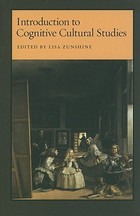Writer: Tony Bedard
Pencillers: Nicola Scott, Jason Orfalas, David Cole
Inkers: Doug Hazlewood, Rodney Ramos, Jason Orfalas
Letterers: Travis Lanham, Ken Lopez, Rob Leigh, Swands
Tony Bedard takes over
Birds of Prey for this volume; I previously enjoyed his work on
Green Arrow and Black Canary and
R.E.B.E.L.S., and what's here maintains that quality: fast, light action, but with a strong focus on characters and characterization. Rather than one overarching story,
Club Kids is made up of five single-issue stories, a technique that works well as Bedard makes his mark on the title.
The first, "Stone Cold Knockout," alternates between Dinah and Barbara discussing Dinah's impending nuptials and a killer pursuing the New God (and Secret Six member) Knockout. The former is fun, and provides some much-needed preparation for that marriage, while the latter was hard to care about, but still decent. Best part of the issue was definitely Big Barda learning how to play Pokémon. It's nice to see Bedard get Dinah and Ollie's history right, too, instead of portraying (as has become
de rigeur since Judd Winnick's run) Ollie as having been a constant philanderer.
The next, "The Fan Club," focuses on the Huntress, and well captures the character's awesomeness, as she simultaneously saves a hijacked school bus and stops a plot to do massive damage to Metropolis. Huntress is a violent, angry character, but not an impulsive idiot, and Bedard shows her at her best here.
"Nerds of Prey" is an Oracle-focused story, resuming the conflict between Oracle and the Calculator that had been dropped for the last few volumes of
Birds of Prey. Again, this is just fun, as the two characters end up at the same software expo trying to outhack one another. (Also, it finally explains why and how Barbara's base was destroyed back in
Between Dark & Dawn!) I found Simone's Calculator a little too one-note and creepy at times, but Bedard amps up the comedy enough to make it work.
The best story in the book is probably "The Warrior Wake of Zinda Blake," where Lady Blackhawk mourns the (cursory, off-panel) death of a friend in her own distinctive way... by boozing it up, hijacking a taxi, and going on a cross-country chase. Bonus points for gratuitous inclusion of an Amish buggy. It's a complete blast, and probably the best (only?) Zinda-focused story in the series yet.
The final story is the weakest, more so due to placement than any intrinsic problem, I think. "Club Kids" confusingly takes place after
Metropolis or Dust, the next book, so Misfit and Black Alice have a history that hasn't actually been seen. Why not put it there? It's actually pretty okay, just nothing special: Misfit and Black Alice must work together to escape from the Dark Side Club. (This volume's third reference to the then-impending
Final Crisis.)
Overall, this is a fun set of stories, and one of my favorite
Birds of Prey books so far. The characters have nothing to worry about in Tony Bedard's hands, only they're about to change hands again...













